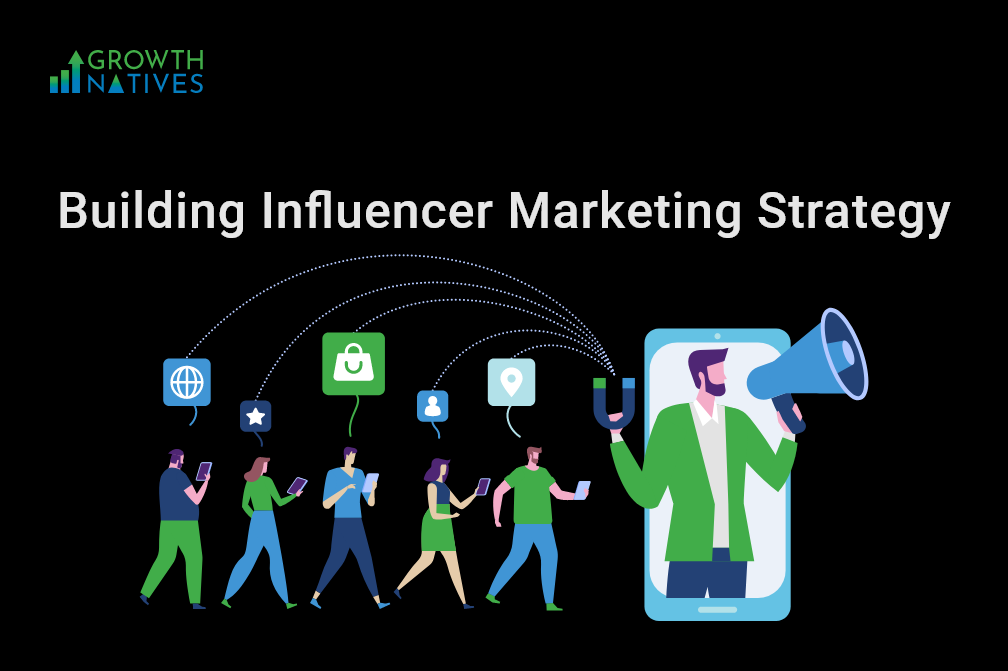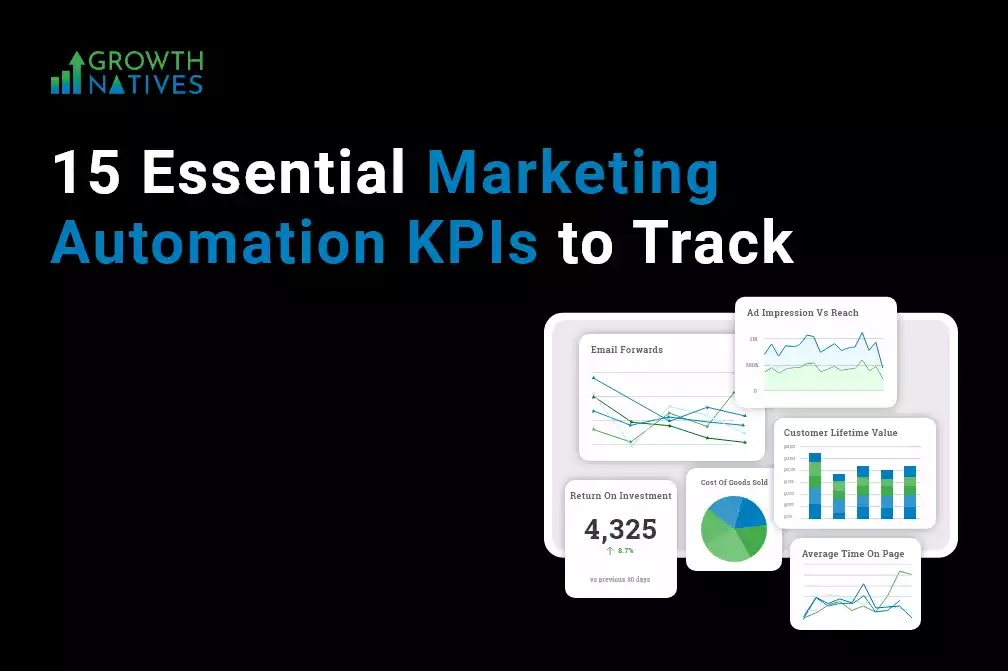
Building Influencer Marketing Strategy in 2022
By Sakshi Arora
Feb 10, 20228 min read
The global influencer market value has immensely increased over the years. In 2021, the market was valued at 13.8 billion US dollars and is expected to reach 15 billion US dollars in 2022.
The numbers are impressive, and so is the value this marketing strategy generates for brands and businesses.
Today, it is almost impossible to pass down a day without scrolling through social media, whether it is Instagram, Facebook, Twitter, or LinkedIn. Everyone has their own share of love for each social media land. And wherever you go, you can see influencers sharing their experience and opinions about products, services, and brands.
If we talk about companies, it is impossible to turn a blind eye to such an influential platform that can up your game exponentially!
In a nutshell, influencer marketing is an infallible way to expand your horizons in the world of social media.
However, there is no one-size-fits-all. If you are planning to scale up your influencer marketing approach, then the latest industry trends and marketing strategies can come in handy when crafting a plan.
Before we move to the influencer marketing strategies, let’s first learn about the types of influencers that are dominating social media with attention-grabbing content.
Types of Influencers
When we talk about influencers, celebrities such as Cristiano Ronaldo, Ariana Grande, Selena Gomez definitely pop up in your minds!
With millions of followers, they are no more just celebrities, but top influencers. For brands, influencers with dedicated followers, even if it is a small number, can be effective and go a long way. Let’s look at the different types of influencers based on their followings that can benefit your business.
Mega Influencers
Mega-influencers are very prominent on social media due to their celebrity status, with over a million followers.
Macro-Influencers
Macro-influencers are celebrities, TV personalities, sportsmen, or thought leaders who have a smaller audience of between 5,00,000 and 1 million followers. Brands often regard macro-influencer material to be more professional-looking than micro or nano influencer content.
Micro-Influencers
Micro-influencers are those with 10,000 to 50,000 followers. Micro-influencers produce content that is less polished than that from macro- or mega-influencers, yet it may feel more sincere. Depending on your company goals, this may have an impact on the level of success your brand has with influencer marketing.
Nano Influencers
Nano influencers have a small following from 1,000 to 10,000. Nano-influencers are far more cost-effective than other types. Therefore, firms with little resources might wish to start here. As they establish their following and connections with businesses, some nano influencers don't charge brands at all.
Finding and harnessing influencers that best match your business is an important part of developing a good influencer marketing strategy. Here are seven easy-to-follow steps to get you started.
Tips for Creating Your Influencer Marketing Strategy
1. Assess your Goals
Setting goals, deciding on a budget, identifying the target audience, and establishing KPIs are the initial steps (KPIs). Begin by determining your target audience: who will you be attempting to reach with your influencer marketing campaign? Creating an audience persona might assist you in determining the attributes you seek in your influencers.

Set a budget when you've narrowed down your target demographic. Remember that the cost of a campaign is related to the size of the influencer's audience when setting up funding. After that, create a KPI that incorporates targets such as impressions, views, audience reach, customer engagement, and click-through rate.
2. Define Target Audience
You must first identify your target demographic before you can even consider who to utilize for your next influencer marketing campaign. One reason for this is that, in most circumstances, the perfect influencer is someone who is similar to your target consumer persona. You may also choose an influencer based on who appeals to your target audience. Sports influencers, for example, are frequently different from their audiences: they may be someone whom the audience wants to emulate.
The choice of social media network is another reason you should identify your audience. Some platforms are popular with a broad audience, while others are targeted at a specific audience.
3. Specify Content Delivery Type
Prepare to manage content for your campaign once you've chosen an influencer. It entails creating a content strategy for your campaign and establishing expectations and requirements for the business, agency, and influencer.
Getting content ready will inform the influencer of what you expect of them as well as provide opportunities for collaboration. You should also include details such as the amount and type of posts the influencer is anticipated to make, the platforms on which the campaign will be run, and a timeframe for when the material should go live. Include information on usage rights and exclusivity.
4. Choose the Right Influencers
There are a number of approaches for researching and identifying influencers, including demographic information and target market analysis. To scrutinize, you can utilize Google's Search tool or Facebook's. Both provide a search engine that reveals who has the most influence on users. You can also use alternative search engines to locate influencers that your rivals may have overlooked.
Three steps to finding the right influencers:
- Identify
Determine who the most influential people are in the region you wish to target. Identify the ongoing trends and use them to your benefit.
- Evaluate
Evaluate each influencer's prior campaigns, as well as their postings, values, and history. Their entire image must be consistent with your company's.
- Calculate
Measure the average number of interactions by their engagement rates.
As you begin your search for influencers, you will need to decide which platforms to employ and how many influencers to target. On various platforms, influencers have diverse levels of popularity. Some may be quite popular on Facebook, whereas others might be dominating Instagram. You must be extremely specific at this stage in order to avoid affecting the subsequent steps.
5. Give Creative Freedom
The most successful collaborations between influencers and companies are those that benefit both parties. This can happen in terms of visibility and generating social buzz. At the same time, this collaboration provides legitimacy and social evidence to each of them. Before partnering with an influencer, companies should choose someone who is a natural match for the company, which means their content should mirror the brand's values.
The authenticity and originality of influencers are part of what makes them so successful. It can be difficult to maintain original content as more and more businesses resort to influencer marketing. During collaborations, brands should give influencers the freedom to maintain their individuality and originality. Original material is what attracts audiences to influencers, and overtly sponsored content detracts from the influencer's natural attractiveness to their audience.
6. Generate Organic Posts
Consumers today are aware of when brands are pitching, and many have become immune to the traditional form of advertising after being bombarded with ads and promotional emails. Moreover, with the emergence of ad blockers, native advertising has the potential to be significantly more successful than branded advertising.
When done well, influencer marketing commercials look to be native. Influencers should incorporate the brand's product into their natural context rather than pushing it or using apparent product placement. Too much "product placement" and highly branded material detracts from the genuineness of a successful influencer.
7. Follow up with Influencers
Following up with your influencers is a relatively simple aspect of an influencer marketing strategy. If you need to review the material before it goes live, make sure your team notifies you of the submission. After that, double-check that the content has been submitted. Look for the announcement on their page. For your records, consider taking a screenshot or downloading a copy.
Make sure to stay in touch with your influencer once the material has been published. Ask him if he has any issues regarding the overall execution of the influencer marketing campaign before giving over the payment. You could also ask whether they think your product has room for improvements or if there are any applications that haven't been considered yet. Such feedback is great for both research and marketing.
Final Words
The digital marketing agency is transforming with pace, which makes it important for you to tap into the quintessential benefits of influencer marketing and start applying them in your digital marketing campaigns.
With more influencers in the market, the depth of possibilities increases. There's always a possibility you will find an ideal influencer if you know who your target audience is and establish reasonable and realistic goals for your influencer marketing campaign.
Our Growth Natives team can help you start building your influencer marketing strategy immediately. However, like with any social media approach, you must be flexible and ready for change. Connect with our team at Info@growthnatives.com to learn more!




